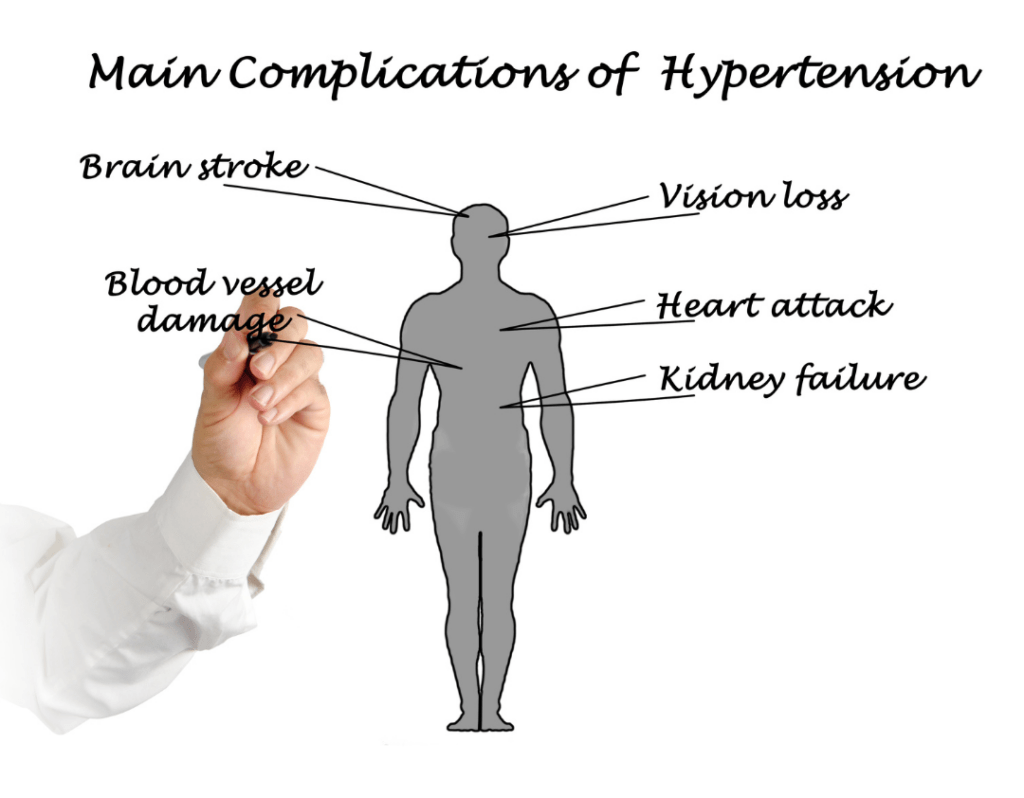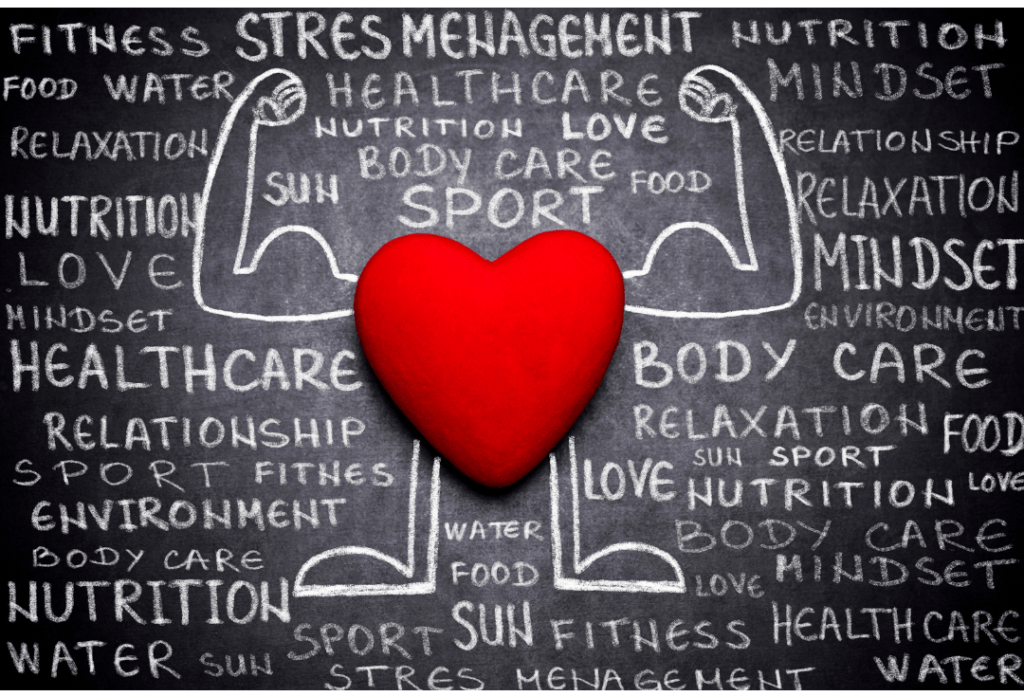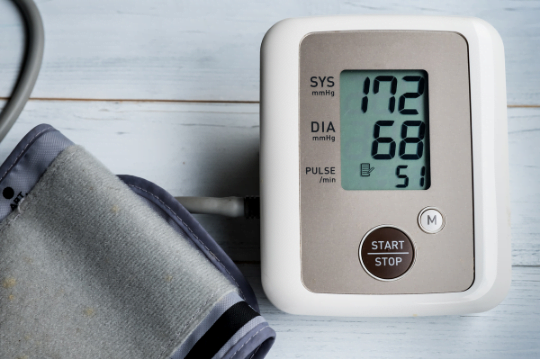Approximately 1.28 billion adults around the world between 30 and 79 years old have high blood pressure. With a global population of 7.87 billion, hypertension-affected persons comprise 16.26% of the world population.
For Canada, alarmingly, the percentage of the population affected by high blood pressure or hypertension jumps to approximately 23%, with the highest number of medical prescriptions (compared to any other medical disorder) of 4 million prescriptions every month in Canada alone.
Hypertension, also known as high blood pressure, is a medical condition in which the blood pressure in the arteries is persistently high. High blood pressure usually does not cause symptoms. Long-term high blood pressure is a significant risk factor for coronary artery disease, stroke, heart failure, peripheral vascular disease, and chronic kidney disease.
- How is blood pressure measured?
- What are the high blood pressure symptoms?
- What are the factors that may lead to high blood pressure?
- How is hypertension diagnosed?
- What may cause or promote high blood pressure in seniors?
- What are the expected or possible complications of high blood pressure if left untreated?
- What are the indications of the different value ranges of systolic and diastolic pressure readings?
- Which pressure (systolic or diastolic) is more affected by factors other than health factors?
- What are the things that you can do to lower and maintain your blood pressure at healthy levels?
- Is blood pressure higher in the morning?
- What are the treatments that could be used for high blood pressure?
- How can Ogden Pharmacy help me if I have high blood pressure?
How is blood pressure measured?
Blood pressure is the force of blood against the walls of arteries. Blood pressure is measured in millimetres of mercury (mmHg).
Typically, people use a blood pressure monitor (also called a sphygmomanometer) to measure their blood pressure. There are several types of blood pressure devices. There is the traditional measuring device (the clinical mercury manometer), where the examiner uses a stethoscope (a device used to magnify sounds and listen to the body’s internal organs) combined with the device to determine the pressure. There is also the semi-automated (where the arm cuff has a squeezable valve that must be squeezed and then released controllably) and the automated blood pressure monitor, where no apparent valve or stethoscope is needed.
After following the instructions for the operation of the blood pressure monitor, two readings will appear: a top and a high-pressure reading, called the systolic pressure reading, and a bottom pressure (normally lower than the systolic reading) reading.
Systolic pressure is the pressure generated by the blood flow on the arteries when the heart contracts and push the blood through those arteries or when the heart beats. The bottom number, diastolic pressure, is the pressure exerted on the arteries when the heart rests between beats.
Based on the latest consensus in Hypertension Canada guidelines, high blood pressure is considered to be 135 systolic and 85 diastolic or higher. Normal blood pressure is usually around 120/80 mmHg and sometimes genetically lower for some people or people who regularly exercise.
What are the high blood pressure symptoms?
You can suffer from high blood pressure for years without noticing or feeling any apparent symptoms. That’s why you should check your blood pressure regularly, especially when performing your annual physical examination.
Saying that, some people with high blood pressure can feel:
What are the factors that may lead to high blood pressure?
Many factors can contribute to high blood pressure, including:
- Sedentary life
- Low level of consumption of fresh fruits and vegetables
- A family history of high blood pressure
- Being overweight or obese
- Smoking
- Drinking too much alcohol
- Not getting enough exercise
- Chronic stress
- Some medical conditions, such as diabetes mellitus, kidney disease or sleep apnea
- Certain medications, such as birth control pills, cold remedies, and decongestants
How is hypertension diagnosed?
Hypertension is diagnosed by a licenced healthcare professional according to an algorithm that differentiates between home blood pressure measurement, automated blood pressure measurement, office blood pressure measurement (inside the clinic), and ambulatory blood pressure measurement.
More in-depth details are compiled by Hypertension Canada and can be found here.
What may cause or promote high blood pressure in seniors?
In addition to the above risk factors, another factor may increase the probability of high blood pressure in seniors, which is related to age-related changes.
As you age, your blood vessels become less flexible, and your heart may not pump blood as efficiently as it once did. This can cause an increase in blood pressure.
What are the expected or possible complications of high blood pressure if left untreated?
If left untreated, high blood pressure can lead to several health complications, including:
Heart disease: High blood pressure can damage the heart and lead to heart disease.
Blood vessel problems: high blood pressure can damage the different blood vessels within the body, including arteries and the small capillaries, through different mechanisms.
Stroke: High blood pressure can damage the blood vessels in the brain and lead to stroke.
Kidney disease: High blood pressure can damage the kidneys and lead to kidney disease.
Eye problems: High blood pressure can cause damage to the blood vessels in the eyes and lead to vision problems (also check other eye conditions).
Complications during pregnancy: High blood pressure can lead to complications such as preeclampsia.

The best way to prevent these complications is to control high blood pressure with lifestyle changes and medication.
What are the indications of the different value ranges of systolic and diastolic pressure readings?
– High systolic and high diastolic: A high systolic and high diastolic reading may indicate hypertension or high blood pressure. This condition occurs when the force of blood against your artery walls is too high. If left untreated, hypertension can lead to serious health problems, such as heart disease, stroke, and kidney disease.
– High systolic and low diastolic: A high systolic and low diastolic reading indicates that the person’s blood pressure is not well-controlled. This can be a sign of underlying health problems, such as heart disease or kidney disease. If someone has high blood pressure, it is crucial to see a doctor so that the cause can be determined and treatment can be started.
– Low systolic and Low diastolic: A low systolic and low diastolic reading may indicate a person has low blood pressure. This may be due to various factors, including dehydration, low blood sugar, or taking certain medications. If a person has persistently low blood pressure, they should see a doctor to rule out any underlying medical conditions.
– Low systolic and high diastolic: A low systolic and high diastolic indicates that the heart is not pumping blood as efficiently as it should be. This can be caused by a number of things, including blockages in the arteries, heart disease, or a heart attack. If you have a low systolic and high diastolic, you should see a doctor as soon as possible to determine the cause and to start treatment.
– Big difference between systolic and diastolic pressure: The difference between the two is called pulse pressure. Pulse pressure is a measure of the force the heart pumps blood around the body. Normal pulse pressure is between 40 and 60mmHg. A high pulse pressure means that the heart is pumping blood around the body with more force than normal. This can be a sign of heart disease (e.g. aorta stiffness, valve regurgitation, etc.), severe iron deficiency, hyperthyroidism, or other problems.
– Diastolic is higher than systolic: When someone’s diastolic blood pressure is higher than their systolic blood pressure, it’s called isolated diastolic hypertension. This type of hypertension is more common in older adults and happens when the arteries stiffen with age. Isolated diastolic hypertension isn’t usually as serious as systolic hypertension (where the top number is higher than the bottom). However, it can still increase your risk for heart disease and stroke. If you have isolated diastolic hypertension, your doctor will likely prescribe medication to lower your blood pressure. They may also recommend lifestyle changes, such as eating healthier and exercising regularly.
– Systolic is equal to diastolic: Systolic is equal to diastolic means that the top number (systolic) and bottom number (diastolic) are the same. This is often seen in people with low blood pressure or in those with multiple and life-threatening blood clots. There is a possibility of erroneous blood pressure readings resulting from the device itself.
Which pressure (systolic or diastolic) is more affected by factors other than health factors?
Systolic pressure is generally more affected than diastolic by movement, stress, and other factors. This is because systolic pressure is the highest pressure when the heart contracts, while diastolic pressure is the lowest pressure when the heart relaxes.
When you move, your muscles contract and pressure your arteries, which raises your systolic pressure. Stress also increases your systolic pressure by releasing hormones constricting your arteries and making your heart beat faster.
What are the things that you can do to lower and maintain your blood pressure at healthy levels?
You can do several things to lower your blood pressure and keep it at a healthy level.
1. Eat a healthy diet.
A diet rich in whole grains, fruits, vegetables, and low-fat dairy products can help lower your blood pressure. You should also limit your intake of saturated fats, cholesterol, salt, and sugar.
2. Get regular exercise.
Exercise helps your heart pump blood more efficiently and lowers your resting blood pressure. Aim for at least 30 minutes of moderate-intensity aerobic activity, such as brisk walking, most days of the week.
3. Maintain a healthy weight.
Carrying extra weight can increase your blood pressure. Losing even a small amount of weight can help lower your blood pressure.

4. Quit smoking.
Smoking damages your blood vessels and contributes to high blood pressure. If you smoke, quitting is one of the best things you can do for your health.
5. Limit your alcohol intake.
Drinking too much alcohol can raise your blood pressure. If you drink, do so in moderation.
6. Reduce stress.
Chronic stress can lead to high blood pressure. Try to find ways to relax and manage stress.
7. Get enough sleep.
Getting enough sleep is important for overall health and can help reduce stress levels.
8. Take medications as prescribed.
If you have been prescribed blood pressure medication, be sure to take it as directed.
Is blood pressure higher in the morning?
There are a few different things that can contribute to higher blood pressure in the morning.
One is the natural increase in cortisol that happens when you wake up. This hormone helps regulate blood pressure and can cause a spike in the morning.
Another possibility is that you may be dehydrated from not drinking enough water throughout the day or night. This can lead to higher blood pressure because your blood vessels are not as hydrated and can’t expand as much.
Finally, eating a high-sodium meal the night before can also contribute to morning hypertension. Sodium causes your body to retain water, leading to higher blood pressure.
If you’re noticing that your blood pressure is higher in the morning, try to drink more water throughout the day and avoid high-sodium foods.
What are the treatments that could be used for high blood pressure?
Various treatments are available to help lower high blood pressure, including lifestyle changes, such as dietary modification and exercise, and medications, such as diuretics, ACE inhibitors, beta-blockers, or a combination. In some cases, surgery may also be necessary.
How can Ogden Pharmacy help me if I have high blood pressure?
Ogden Pharmacy can help you in various ways (especially if you live in Lynnwood, Ogden, or Riverbend):
– Our pharmacists can transfer your prescriptions to our pharmacy in our Calgary location and ensure that you always have your medication ready for your next dose.
– We have a free delivery service for your prescriptions, so you will be sure that you will get your medications even if you are busy or cannot come to our Calgary location.
– If you take a number of medications, Ogden Pharmacy has a free blister packs service to ensure that all your medications are organized and ready for you.
– You can order any other over-the-counter medications from our pharmacy, and you can also ask for free delivery if your over-the-counter purchases exceed $50, or if you combined any OTC with at least one prescription.






